Digital Camera World Verdict
Capable of unique immersive POV shorts and also worth considering as a minimalist rig for vloggers, the lightweight Insta360 Go 2 has some surprisingly big features for such a small camera. Excellent image stabilisation, ‘horizon lock’ and a multi-functional battery case make this versatile clip-on camera more than just a novelty item.
Pros
- +
Plenty of mounting options
- +
Case has legs and tripod thread
- +
1440p (2K) resolutionl
- +
HDR and image stabilization
- +
Waterproof
Cons
- -
Larger than original
- -
Short battery life
- -
9MP still photos
Why you can trust Digital Camera World
Can this unique-looking Insta360 Go 2 miniature action camera resurrect the wearable camera movement – begun by Google Clips – and capitalize on the trend for immersive first-person vlogs and TikTok? Although Insta360 has been impressing us in recent years with the likes of the Insta360 One X2, its original Insta360 Go from 2019 was a curious attempt at a POV camera. This follow-up is a more serious, more talented and far more impressive candidate that would easily win any ‘best wearable camera’ contest against its higher-resolution rival, the Akaso Keychain 4K.
But it begs questions. Who needs a wearable camera? What are they for? If you’ve ever taken a hyperlapse video while holding your phone to your chest, or worse, at arm’s length for long periods, you’ll like the Insta360 Go 2. As well as hyperlapses the Go 2 indulges in HDR, FlowState image stabilisation and slo-mo while working well as a mini-rig for vlogging. Not bad for a ‘novelty’ camera – and it has plenty more intriguing features behind its Apple AirPods-like good looks.
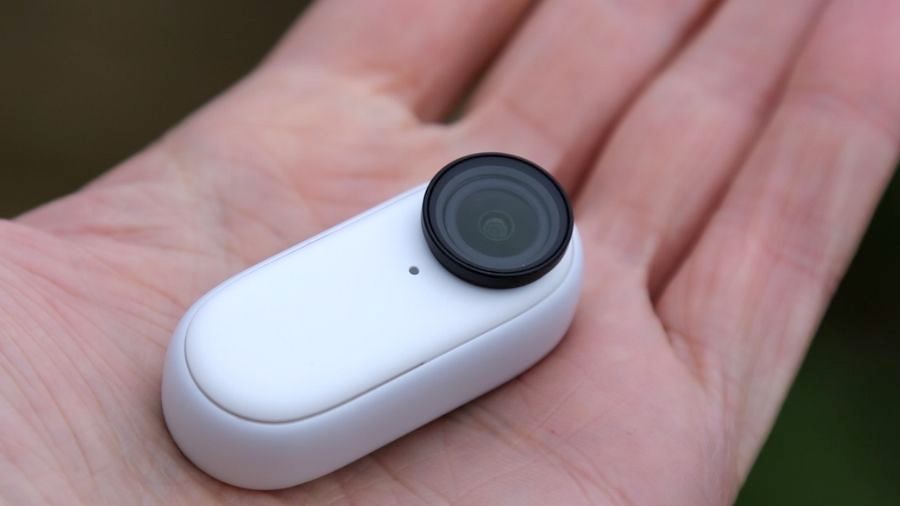
Build and handling
At 53x24x21mm/2x0.90.8-inches and weighing 27g/0.93oz, the Go 2 is a slightly bigger deal, physically speaking, than its predecessor. It’s also blessed with a higher resolution sensor, improving on the original’s full HD limits by up-rezzing to 2560x1440/30 frames per second (fps) (usually referred to as 1440p, ‘2K’ or ‘Quad HD’) for video, while the data rate is pushed up to 125Mbps. Though still photos remain at 9MP they can now be captured as raw DNG files for lossless post-processing. Whereas the original had 8GB of built-in storage the Go 2 has 32GB. The Go 2 is also waterproof to 4m/13ft.
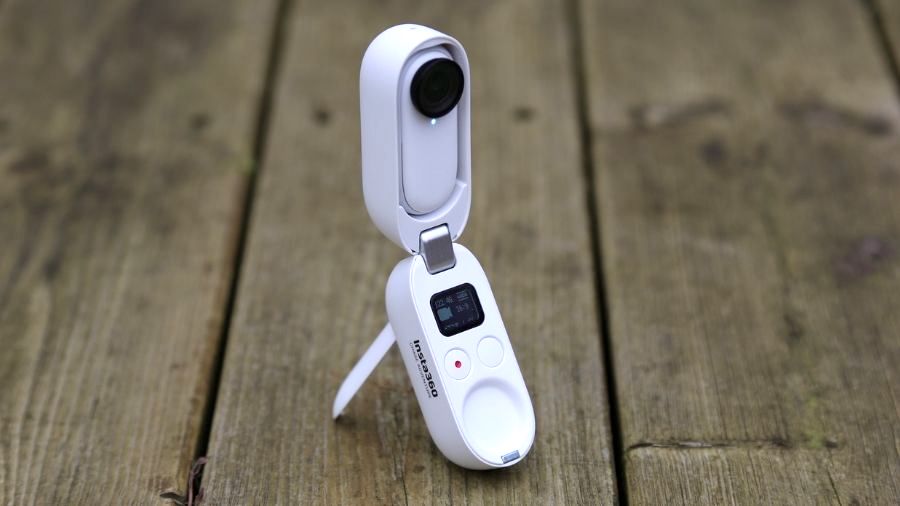
That charging case is key to the Go 2’s design and the way it works. Armed with a 1,100mAh battery, it can refill the Go 2’s 210mAh battery four times over, but it does much more than that. Palm-sized and weighing 63.5g/2.24oz, the charging case has its own control panel and screen that allows you to operate Go 2 while it’s magnetically tucked-up in the case itself. Why? Because the charging case also has two fold-out legs that enable Go 2 to be used, with the case flipped-open, to work on a surface. Like a proper camera. The case even has a built-in 1/4-inch thread for mounting Go 2 on a tripod or a selfie stick. Or you can remove Go 2 from its case and control it via Insta360’s app.
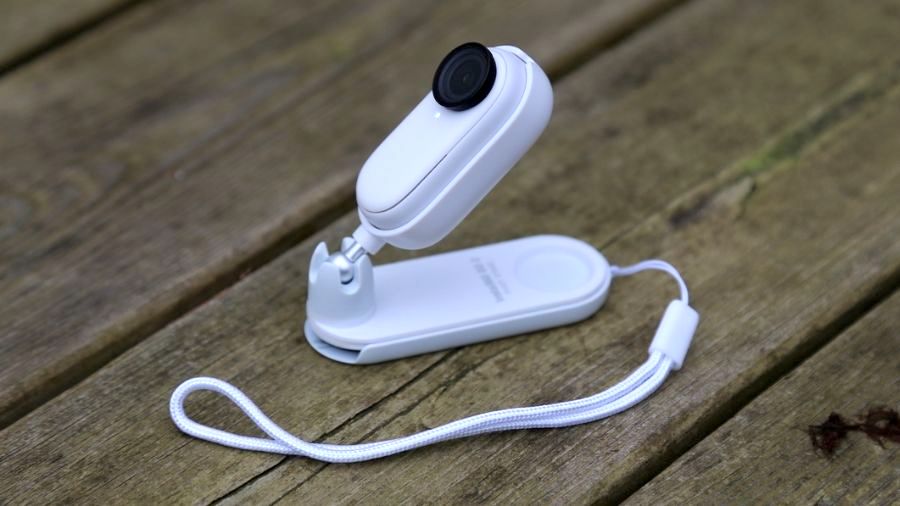
Like the Akaso Keychain 4K, the Go 2 is magnetic and comes with a few accessories to help make it a clip-on camera. As well as the charging case itself there’s a magnetic pendant for hanging around your neck, a cradle for clipping Go 2 to a jacket and a pivot stand with a wrist loop for mounting anywhere (and useful for underwater shooting).
Performance
The Go 2’s design and magnetic nature make it go places that phones cannot to fetch unique videos. Need some video of a knife chopping an onion? So just stick it to the knife. A cat’s point of view? So attach it to Fluffy’s collar. Grabbing a hyperlapse merely means a fit-and-forget bike ride or walk through a city.
That it also has enough resolution to make these novelty videos actually look good is a huge bonus.
Because while Go 2 doesn’t exactly have flagship-style action camera qualities, it’s not far off. Perhaps the most important advanced feature Go 2 has is FlowState stabilization. Adding a fluent look to POV video that can often seem unwatchable, FlowState can be toggled on and makes all the difference. It’s even got ‘horizon lock’ for an even smoother look. Those two features together help create a ‘pro mode’, which in our tests meant capturing 1440p (2K) video in the ultrawide field of view with the ‘vivid’ colour mode engaged. ‘Starlapse’ is also worth a try and very convenient, though the soft results are strictly for sharing on social media.
In practice the most impressive addition to the Go 2 is that 1/4-inch tripod thread, which makes it usable with a selfie stick. Add FlowState horizon lock and you’ve got a space-saving, smooth-looking vlogging rig. You can also just perch Go 2 on a surface, in its charging case, to do a piece to camera.

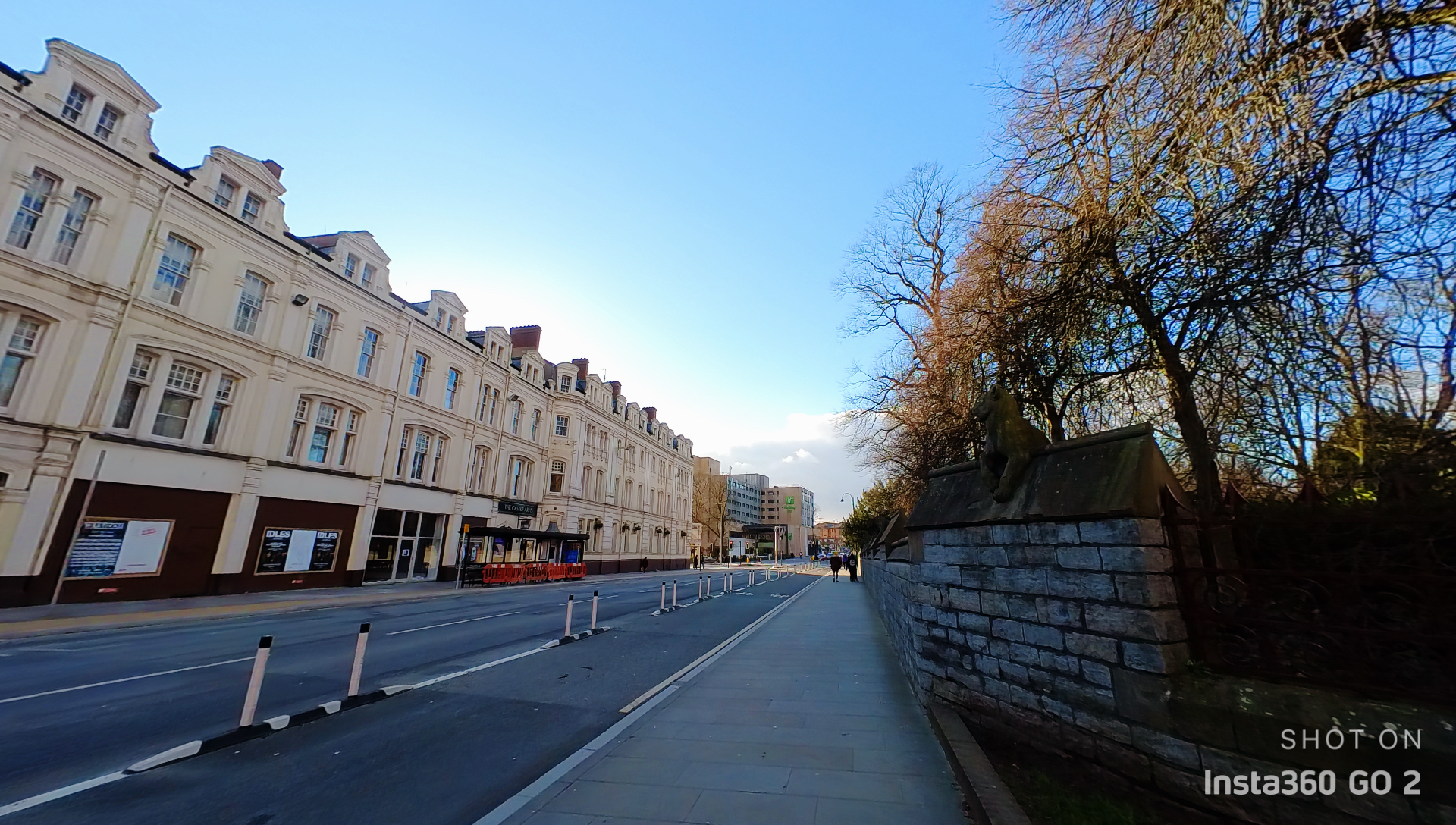

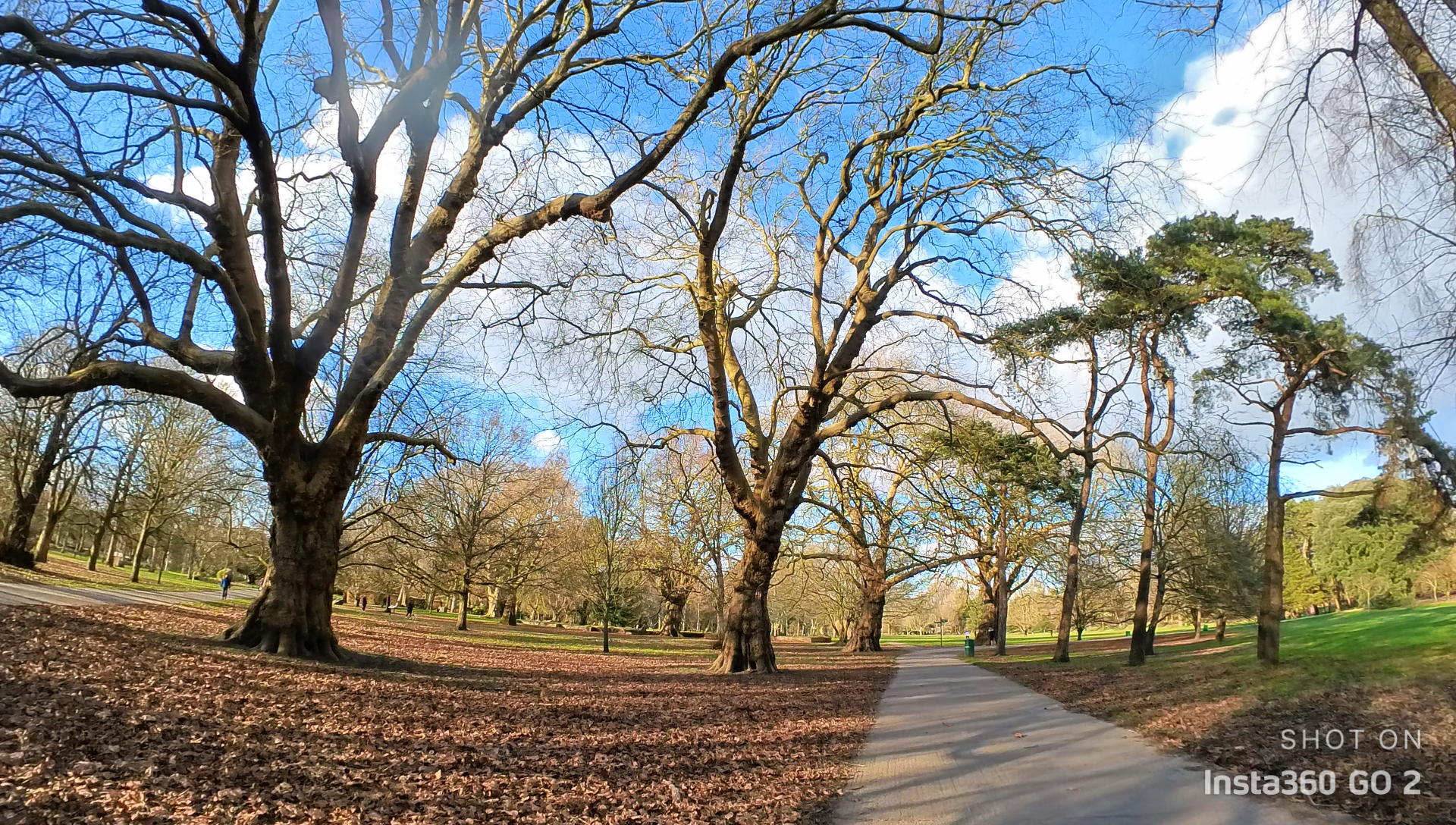
Photos are reasonably good, if rather low-resolution, though manual images are possible (shutter 1/8000s-120s, ISO 100-3200).
After you’ve captured some unique MP4 videos they’re relatively easy to trim, edit, add effects and share using Insta360’s reliable app. It takes a while to master, but there are endless edits possible.
Insta360 claim that Go 2 goes for about 30 minutes in basic modes and that its case is good for another 2.5 hours, which seems about right in our tests. So we’re only talking short bursts of use.
Verdict

Do you need a wearable camera? Probably not, but if you’re after unique immersive shots or fancy a small, lightweight vlogging rig then the Insta360 Go 2 is worth considering. An increase in resolution and shooting features – chiefly FlowState stabilization and ‘horizon lock’ – makes it a lot more serious a product than the original Go. Add a newly designed and highly practical charging case, waterproofing and a novel ‘Starlapse’ mode and this clip-on camera is more versatile than it looks.
Read more:
• Best action cameras
• Best budget action cams
• Best 360 cameras
• Best GoPro cameras

Jamie has been writing about photography, astronomy, astro-tourism and astrophotography for over 15 years, producing content for Forbes, Space.com, Live Science, Techradar, T3, BBC Wildlife, Science Focus, Sky & Telescope, BBC Sky At Night, South China Morning Post, The Guardian, The Telegraph and Travel+Leisure.
As the editor for When Is The Next Eclipse, he has a wealth of experience, expertise and enthusiasm for astrophotography, from capturing the moon and meteor showers to solar and lunar eclipses.
He also brings a great deal of knowledge on action cameras, 360 cameras, AI cameras, camera backpacks, telescopes, gimbals, tripods and all manner of photography equipment.

